Mrs. Fischels
OHS math instructor, Brooke Fischels, was among nine math teachers across the state who were invited to the Iowa State University campus for the Holl Mathematical Discovery for Teachers Workshop in June.
The workshop focused on a mathematical discovery process, including numerical experiments to gather data, observing patterns in the data, making conjectures, and proving (or disproving) the conjectures. Implementation of these ideas with students was also discussed. The participants learned the free mathematical software, Sage, and used it to gather data.
The workshop was structured around two mathematical problems, presented by Dr. Leslie Hogben, Dio Lewis Holl Chair in Applied Mathematics and Professor of Mathematics at Iowa State University, and Dr. Ulrica Wilson, Associate Professor of Mathematics at Morehouse College. The workshop divided teachers into two research groups to explore the problems.
One problem involved mathematical analysis of the Lights Out! game, which was sold as a handheld electronic game in the 1990s and can be played online, e.g., http://www.neok12.com/games/lights-out/lights-out.htm. There is a 5 x 5 grid of lights, each of which can be either on or off. Each light is also a button, and when you press a button you change (turn on to off, and off to on) that light and each of its neighbors (above, below, left, right) that exist. The goal is to turn all the lights off. This game can be analyzed using matrices, which are rectangular arrays of numbers, and arithmetic mod 2 (in mod 2, 1+1= 0, as well as the more usual 0 + 1 = 1 = 1+0 and 0 + 0 = 0). Variations including different size grids were explored.
The other problem involved iterating (repeatedly applying) a particular function to see if the number does not change (i.e., is a fixed point), goes to a fixed point, or some other behavior. The particular function looked at initially was to square each digit and then take the sum. For example, 1 is a fixed point (because 12 = 1) and 13 goes to 1 (because 12 + 32 = 10, and 12 + 02 = 1). Variations including summing cubes and other powers of the digits were explored.
At the end of the workshop, teacher groups presented results.
“It was a joy working with these teachers,” said Dr. Hogben. “Outstanding teachers like these are what every parent wants for his or her child.”

